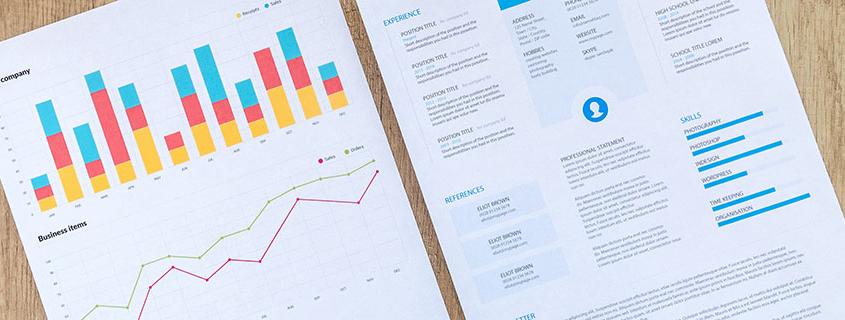Website Performance Optimization Techniques
Website performance optimization should be your top priority when developing a website, and should be a priority over design, content creation, and brand development.
Why, you ask?
Well, better performance optimization allows for a much better user experience, which leads to the ultimate goal – user satisfaction.
No matter the niche, today’s technologically advanced internet space demands faster loading speeds and website functionality. In such a fast-paced environment, a brand simply cannot afford poor performance, which is why businesses need to be up to date on current website performance technologies and have applied them to their website.
A Preliminary Step
The first step to changing anything is acknowledging that there is a problem and identifying what that problem is. Once identified, changes need to be made in order to fix them. Most issues can be identified by simply making a thorough examination of your business’s website. Simply by browsing your own website, you will be able to experience it as a potential client would and see areas where your site is lacking and as a result is driving away potential business. As you go through your website on a variety of devices (desktop, tablet, smartphone), look for such things as pages that load slowly, broken site imagery, content that looks off or unsightly.
- Conduct a speed test through online tools to understand the user experience.
- If your site is loading slowly, use dedicated tools to recognize the source of the lag.
- Formulate a plan geared towards fixing the issues you spot.
Consider having a site audit performed on your website. While personally browsing your website can bring to light many issues that might be hindering the growth of your online business, a comprehensive site audit is best, as it will help turn up issues that aren’t so obvious to the human eye.
While there are many things that go into a properly optimized website, this article is going to focus on one aspect … that of improving your site speed and performance.
Here are some of the techniques recommended by industry professionals for optimizing website performance;
1. Lighten Your Load
Much of a website and it’s content is un-necessary and/or far larger than it has to be. Most websites are written and designed in a way that they will work for a variety of industries. While this flexibility is nice, it makes it so that your company’s website takes longer to load than it has to, and leads to a loss of website conversions. Unused content on your website’s pages can delay your website. A couple of ways that you can eliminate some of that bloat are;
Compress Media
You can achieve website performance optimization by checking the size of the media on your pages. Videos or images can slow down your site speed and lower website performance. Consider removing images and videos that are un-necessary, and take away from your website’s sales funnel. Techniques such as lazy loading images, using cutting edge image compression technology, and resizing un-necessarily large images can take some of the load off the website.
Play Around with Code
You can choose to play around with your code files by clearing up code that you are not using or organizing it to optimize resources. Lessened clutter can lead to faster loading times. You should include the following in your checklist;
- Minimize and compress your website’s code
- Remove dead or unused functionality
- Rewrite inefficient code
2. Caching Content
Working on caching content is a great way to get better website performance metrics. CSS and JavaScript codes can slow down website performance if they are not cached. Non-cached files require the system to re-download files each time a user submits a request.
When files are cached for CSS, JavaScript, and other file types, a user’s browser will cache the resources the first time they visit the website. Subsequent visits will only require the browser to reuse the already downloaded resources causing the webpage to load faster.
3. Image and Video Optimization
As technology progresses, users begin accessing websites from different devices. Naturally, these devices use various types of processing for a page to load quickly. Since the largest part of a website usually consist of images and videos, optimizing their type and resolution is essential to achieving an optimal page load time.
Inefficiently coded graphics slow down a website and take a long time to load and can put a user off causing them to visit another website. If your website is using non-optimized site imagery, by the time your images load, potential customers might have already checked out and taken their business elsewhere.
To avoid this, images must load lightning quick. Consider using responsive design technologies to decrease page load times. Responsive design is a way to incorporate different image and video resolutions according to the device that the user is accessing your website on. While someone viewing your website on a desktop, might appreciate site imagery that is of high resolution and quality, someone on a smartphone will not. Because a smartphone has a smaller available screen size, such a large resolution image is not needed and only serves to slow down your website and take away from the user experience.
4. Make Use of Prefetching
Prefetching refers to an act of storing information in advance for potential action by the user. Browsers typically store information that might come in handy in the future and reduce loading times.
When the user clicks on the link, the website will load much faster as the information has already been downloaded in the cache. This way, while your customer is looking through your site, your website is actively pre-loading additional content that is likely to be viewed next.
5. Cleaning Your Website
Your home might not be the only thing that needs a spring cleaning. You may have to spring clean your website once in a while to improve performance. Data might become redundant over time through replication. It might not be in use, or relevant anymore, so discard it before it has a negative impact on your websites functionality.
Keep the codes you are using actively and eliminate unnecessary ones that have not been used for some time—the less codes, the better the website’s performance.
Final Thoughts
Recognizing the importance of website performance optimization and incorporating it in your quarterly website analysis will help you increase traffic in the future and land new business. Faster websites can build trust, resulting in users sticking around for much longer than expected.
If you want better results, look into site performance optimization today.
Optimize Performance at Web Development Done Right
A journey to better website performance is just a few clicks away. Contact Web Development Done Right and speak with a member of our team. Our professionals can check your website’s performance and provide suitable solutions that allow you to get better results and make more money online!






